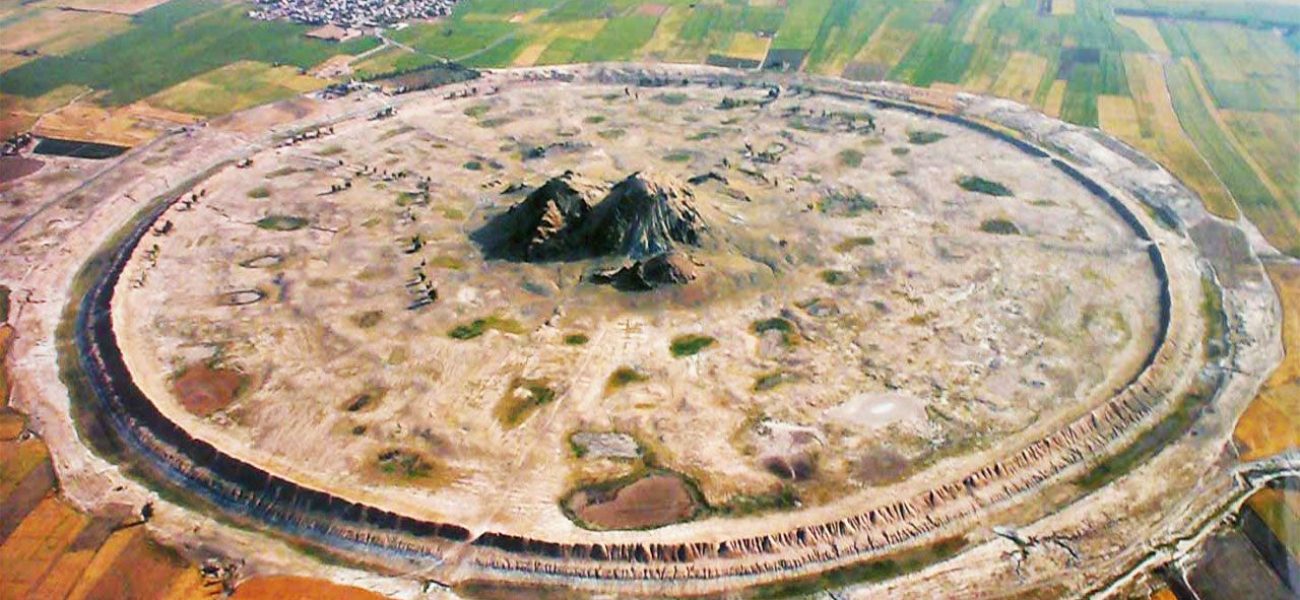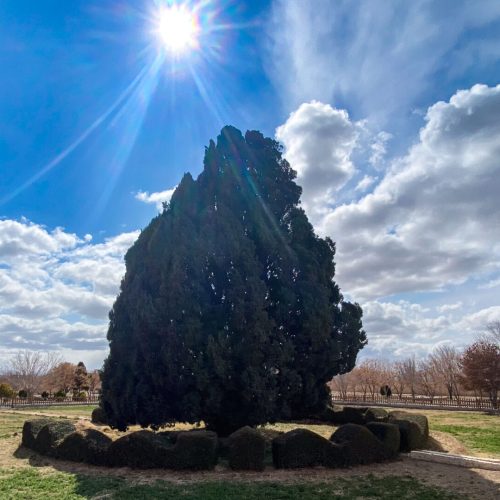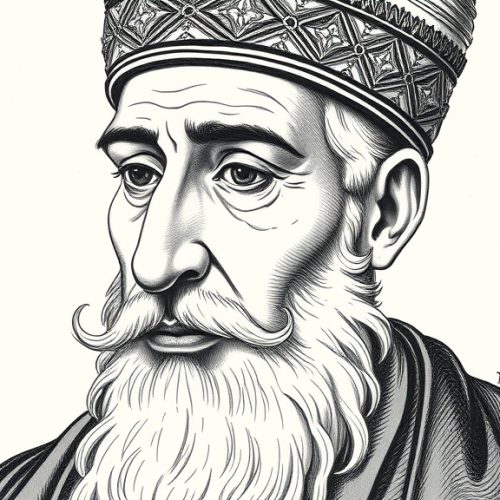In the dawn of Persian history, long before the mighty Sasanian Empire rose to restore the grandeur of Achaemenid rule, a lesser-known but equally important dynasty ruled over the ancient province of Persis (modern Fars). This dynasty was called the Frataraka, a lineage of rulers who held sway over this region during the turbulent centuries following the collapse of the Achaemenid Empire. They were neither kings nor mere satraps, but rather custodians of both temporal and spiritual power, whose governance laid the groundwork for what would become one of the greatest empires of antiquity.
As we delve into the history, role, and significance of the Frataraka, we enter a shadowy and fascinating epoch in Iranian history, a time when Persis, though diminished, still held onto its legacy of kingship, religion, and culture. We will explore their rise, their roles as rulers and priests, their minting of coins, and their eventual disappearance from history. We will also engage with the scholarly debates regarding their chronology and origin, revealing the challenges faced by historians in unraveling the mysteries of this enigmatic dynasty.
Rulers of a Forgotten Epoch
The Frataraka ruled during the chaotic centuries that followed the collapse of the Achaemenid Empire at the hands of Alexander the Great and his successors, the Seleucids. The Greek conqueror’s death left a fractured empire in its wake, and as his successors struggled for dominance, Persia itself became a battleground. It was in this uncertain landscape that the Frataraka arose as regional rulers in Persis, their authority linked both to ancient Persian traditions and the Seleucid imperial structure.
The term “Frataraka” is an Old Persian title, variously translated as “governor” or “leader,” but in the context of these rulers, it took on a special significance. They were not mere administrators, but also guardians of Zoroastrian religious rites and practices, upholding the fire temples and keeping the ancient faith alive amidst the rise of Hellenism.
While the political situation of the region was one of turmoil, the Frataraka rulers managed to establish a semi-independent realm in Persis. From their base in Persepolis, they maintained a delicate balance of power—paying tribute to the Seleucids while also preserving their autonomy as the spiritual heirs of the Achaemenid kings. The exact nature of their power, and how they navigated their relationship with the larger empires that surrounded them, remains a topic of intense scholarly debate.
The End of the Frataraka and the Rise of the Sasanians
The twilight of the Frataraka’s reign occurred during the 2nd century BCE, as the Seleucid Empire weakened and fragmented. The Seleucid grip over Persia slackened as they dealt with internal revolts and the rise of Parthia to the north, and the Frataraka seized the opportunity to assert greater autonomy.
However, their rule would come to an end as another Persian dynasty rose to prominence—the Sasanians. Founded by Ardashir I, the Sasanian Empire would come to dominate Persia and much of the known world for centuries to come. Ardashir himself was born in Persis, and it is likely that he inherited a region still heavily influenced by the traditions established by the Frataraka.
There are indications that Ardashir’s family had ties to the Frataraka, and that he may have drawn upon their legacy to legitimize his own rule. The Frataraka thus serve as a crucial link between the Achaemenids and the Sasanians, preserving ancient Persian traditions through the Hellenistic and Parthian periods until they were finally revived on a grand scale by the Sasanian kings.
Roles of the Frataraka: Custodians of Religion and Power
The role of the Frataraka was a multifaceted one, blending both religious and political authority. They served as the rulers of Persis, governing the province’s cities, overseeing its economy, and maintaining its security. Yet they also held a special status as the guardians of Zoroastrianism, the ancient faith of the Persian people.
In ancient Iran, religious authority was often intertwined with kingship, and the Frataraka were no exception. They presided over the fire temples of Persis, ensuring that the sacred fires—symbols of divine order and truth—were kept alight. The Frataraka were deeply invested in the rituals of their faith, and they acted as priests as well as rulers, conducting sacred rites in honor of Ahura Mazda, the supreme deity in Zoroastrianism. This combination of spiritual and temporal power placed them in a unique position, with a legitimacy derived not only from their political authority but also from their role as keepers of religious tradition.
It is important to note that, during this period, the influence of Hellenistic culture was pervasive throughout the former Achaemenid territories. In the face of this foreign influence, the Frataraka likely saw themselves as defenders of Persian cultural identity. Through their role as both religious leaders and political rulers, they were able to resist the encroachment of Hellenism and preserve the core tenets of Zoroastrianism for future generations.
The Coins of the Frataraka: Symbols of Authority
One of the most tangible legacies of the Frataraka is their coinage, which provides a window into the political and religious ideology of these rulers. The Frataraka coins are remarkable artifacts, illustrating both their claim to power and their religious identity. Struck in silver and bronze, these coins bear inscriptions in both Greek and Aramaic, highlighting the dual influences of the Hellenistic world and Persian tradition.
The coins are typically adorned with images of the Frataraka rulers themselves, often depicted in the act of worship before a fire altar, emphasizing their role as religious leaders. This iconography harks back to the Achaemenid tradition, in which the king was seen as a divinely appointed figure who ruled with the blessing of Ahura Mazda.
The fire altar depicted on these coins is not merely a symbol of religious piety but also of political authority. The fire altar was a central feature of Zoroastrian worship, and by placing this image on their coins, the Frataraka were making a statement about their role as the custodians of Zoroastrianism. The presence of Greek inscriptions, meanwhile, reflects the reality of the Hellenistic world in which they lived, but the focus on Persian imagery suggests a deliberate effort to assert their cultural and religious autonomy.
The coins also offer clues about the chronology of the Frataraka, as scholars have used them to establish a timeline for the reigns of individual rulers. Despite the challenges posed by the limited historical record, numismatics has been a crucial tool in reconstructing the history of the Frataraka and their place within the broader context of Persian and Hellenistic history.
Summary of Scholarly Debates: Establishing the Frataraka’s Chronology
The exact chronology and origin of the Frataraka have been the subject of much scholarly debate. Historians and archaeologists have long sought to determine the precise dates of their rule, as well as their relationship to the larger empires that surrounded them. Two primary theses have emerged from this debate: the 3rd century BCE thesis and the 2nd century BCE thesis, each offering a different interpretation of the Frataraka’s rise and fall.
The 3rd Century BCE Thesis
The 3rd century BCE thesis argues that the Frataraka emerged in the aftermath of Alexander the Great’s conquests and the subsequent fragmentation of his empire. According to this view, the Frataraka were initially appointed as satraps by the Seleucids, tasked with governing Persis on behalf of the central authority. Over time, however, they asserted greater independence, using their religious authority as a means of legitimizing their rule in the absence of direct Seleucid control.
This theory is supported by the Hellenistic features found on some Frataraka coins, which suggest that the early Frataraka operated within the framework of the Seleucid Empire. The 3rd century BCE thesis also aligns with the idea that the Frataraka were the inheritors of Achaemenid traditions, seeking to preserve Persian identity in the face of Greek dominance.
The 2nd Century BCE Thesis
The 2nd century BCE thesis, on the other hand, posits that the Frataraka rose to prominence during a period of Seleucid decline, as the empire weakened in the face of Parthian expansion and internal strife. According to this theory, the Frataraka took advantage of the Seleucid Empire’s instability to assert their independence, becoming de facto rulers of Persis by the mid-2nd century BCE.
Proponents of this view point to the more autonomous features of later Frataraka coinage, which emphasize their role as Zoroastrian leaders rather than Seleucid governors. The 2nd century BCE thesis also accounts for the eventual eclipse of the Frataraka by the Parthians and, later, the Sasanians, who would go on to dominate Persia in the centuries that followed.
Both of these theses have their merits, and the truth likely lies somewhere between them. It is possible that the Frataraka began as Seleucid appointees in the 3rd century BCE but gradually asserted their independence as the Seleucid Empire weakened in the following century.
List of Frataraka Rulers of Persis
The exact number of Frataraka rulers is a matter of some dispute, as the historical record is fragmentary and much of what we know comes from their coinage. However, a number of key figures have been identified as prominent members of the Frataraka dynasty.
- Ardakhshir I – One of the earliest and most important Frataraka rulers, Ardakhshir I is often considered the founder of the dynasty. His reign marks the beginning of the Frataraka’s rise to power in Persis.
- Wahbarz (Oborzos) – Another significant ruler, Wahbarz is known from his coins, which depict him worshipping before a fire altar. He likely reigned during a period of increased independence from the Seleucids.
- Nafash (Napazus) – A later Frataraka ruler, Nafash’s coins also emphasize his religious authority, with images of fire altars and Zoroastrian symbols. His reign may have coincided with the decline of Seleucid influence in Persis.
- Ardakhshir II – The last of the known Frataraka rulers, Ardakhshir II’s reign likely occurred during the final years of Frataraka rule, as the Parthians and later the Sasanians came to dominate the region.
The Legacy of the Frataraka
Though the Frataraka ruled for only a few centuries, their impact on Persian history and culture was profound. They preserved the ancient traditions of Zoroastrianism during a time of Hellenistic influence, serving as both political rulers and spiritual leaders. Their coins, with their striking imagery of fire altars and religious symbols, offer a glimpse into a world where religion and politics were deeply intertwined.
The Frataraka may have been overshadowed by the later rise of the Sasanians, but they played a crucial role in maintaining the continuity of Persian culture and religious identity during a time of great upheaval. They stand as a bridge between the glory of the Achaemenid Empire and the rise of the Sasanian Empire, a testament to the resilience of Persian traditions in the face of foreign domination.
Their legacy lives on in the fire temples that still burn in the heart of Persis, and in the hearts of those who remember them as the guardians of an ancient and sacred land.




